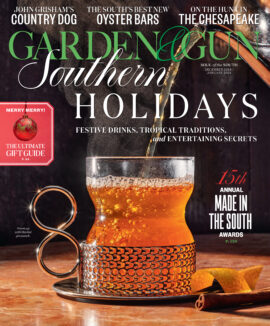Last February, when a water pipe burst in the Oglebay Institute Glass Museum in Wheeling, flooding the display cases of chalices, vases, and the famous five-foot-tall, sixteen-gallon Sweeney punch bowl, curators looked at the situation as goblet half full. “We used it as an opportunity to do a thirty-year makeover,” says Holly McCluskey, the institute’s curator of glass, who, with her team, cleaned and inventoried all four thousand pieces of locally made glass on display. In the nineteenth century, Wheeling became a glassmaking powerhouse thanks to a fortuitous intersection of resources: sand from the Ohio River and a natural abundance of limestone; a bounty of cheap fuel sources including coal and natural gas; and an influx of travelers passing through on steamboats, railroads, and the first federally funded road. Fifty percent of all pressed glass used in the country at the time came from this area. On November 7, the museum will reopen to the public with upgraded jet-black display cases and jewelry-store lighting to enhance the viewing experience, as well as a more thorough look at the hands behind the heirlooms. “We’re focusing on the process, the product, and the people,” McCluskey says. “For one piece of glass, there were as many as thirty workers involved in making it.” oionline.com
Southern Agenda

